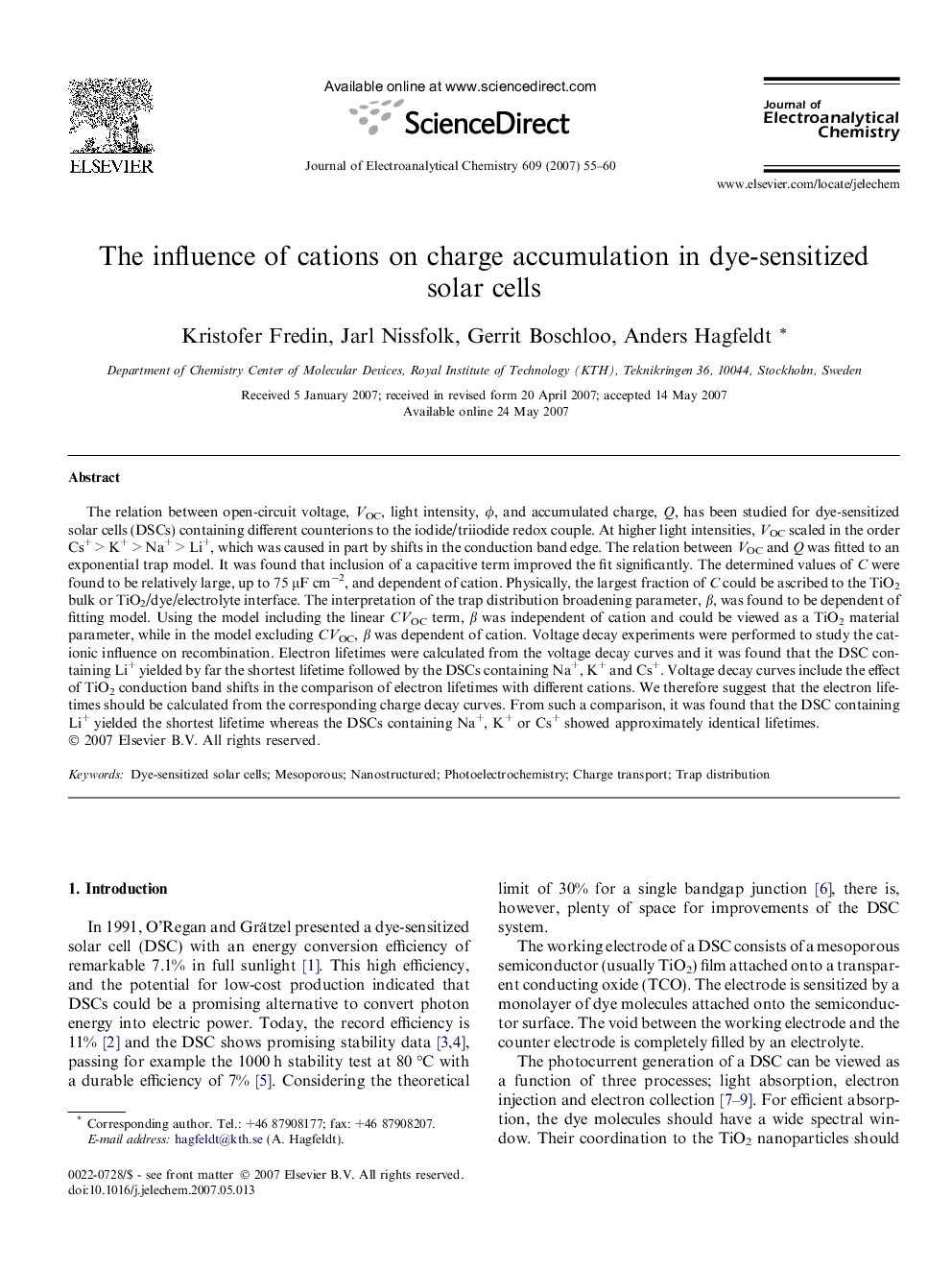| Article ID | Journal | Published Year | Pages | File Type |
|---|---|---|---|---|
| 220820 | Journal of Electroanalytical Chemistry | 2007 | 6 Pages |
The relation between open-circuit voltage, VOC, light intensity, ϕ, and accumulated charge, Q, has been studied for dye-sensitized solar cells (DSCs) containing different counterions to the iodide/triiodide redox couple. At higher light intensities, VOC scaled in the order Cs+ > K+ > Na+ > Li+, which was caused in part by shifts in the conduction band edge. The relation between VOC and Q was fitted to an exponential trap model. It was found that inclusion of a capacitive term improved the fit significantly. The determined values of C were found to be relatively large, up to 75 μF cm−2, and dependent of cation. Physically, the largest fraction of C could be ascribed to the TiO2 bulk or TiO2/dye/electrolyte interface. The interpretation of the trap distribution broadening parameter, β, was found to be dependent of fitting model. Using the model including the linear CVOC term, β was independent of cation and could be viewed as a TiO2 material parameter, while in the model excluding CVOC, β was dependent of cation. Voltage decay experiments were performed to study the cationic influence on recombination. Electron lifetimes were calculated from the voltage decay curves and it was found that the DSC containing Li+ yielded by far the shortest lifetime followed by the DSCs containing Na+, K+ and Cs+. Voltage decay curves include the effect of TiO2 conduction band shifts in the comparison of electron lifetimes with different cations. We therefore suggest that the electron lifetimes should be calculated from the corresponding charge decay curves. From such a comparison, it was found that the DSC containing Li+ yielded the shortest lifetime whereas the DSCs containing Na+, K+ or Cs+ showed approximately identical lifetimes.
